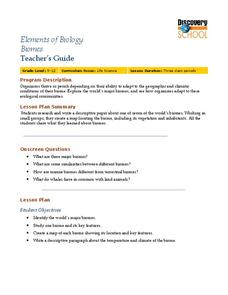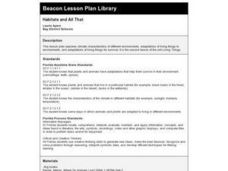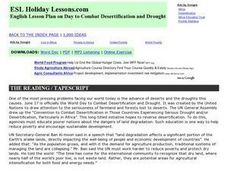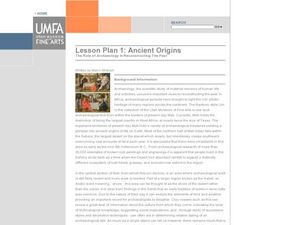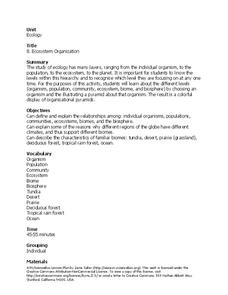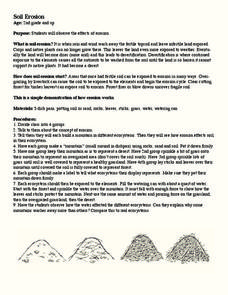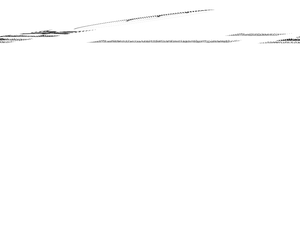Curated OER
You Can Depend on Me
Students identify how they depend on others, and examine and discuss the images on the California Quarter Reverse. They view and discuss images of various habitats, complete a Habitat Research worksheet, and create a habitat diorama.
Curated OER
Eco-Poetry
Students explore the Earth's various biomes and ecosystems using Internet research. They create a multimedia poem using the photos, sounds, and vocabulary from their research.
Curated OER
Biomes
Students explore the worlds biomes and see how organisms adapt to these ecological communities. In this world's biomes lesson students research and write a paper about one of the world's biomes.
Curated OER
Habitats and All That
First graders read books, complete online explorations and discuss the ways in which animals adapt to their habitats in order to survive. They create accordion books, play matching games and dramatize animal adaptations.
Curated OER
China
Sixth graders become more aware of how land features, climate, and vegtation affect civilization. Students are divided into groups and research one of China's regions. They make a relief of their designated area.
Curated OER
Habitat, What is That?
Students explore animal habitats. In this environmental stewardship lesson, students match animals to their habitats in a classroom activity. Students also observe a firefly habitat and read Fireflies. Students create bulletin boards...
Curated OER
Day to Combat Desertification and Drought
In this day to combat desertification and drought worksheet, students read or listen to a passage, then match phrases, fill in the blanks, choose the correct words, unscramble words and sentences, write discussion questions and conduct a...
Curated OER
Ancient Origins: The Role of Archaeology in Reconstructing the Past
Young scholars read information about the ancient origins of art and archaeology with a focus on the Malian culture. For this art origins lesson, students read background information for the topic and compare ancient and contemporary...
Curated OER
Land Associations
Students identify and explore life forms of various biomes, define transitional regions, examine effects of abiotic and biotic interactions, research a biome, and produce newspaper that features environmental information. Lessons all on...
Curated OER
Diversity Ecosystems
Students work in teams to characterize their biomes and compare them to the biomes of the rest of the class. In this biomes lesson plan, students complete a bean activity, relate it to the diversity in biomes, and then research and...
Curated OER
Agriculture: Oklahoma's Legacy
Students explore the history of Oklahoma agriculture. They listen to the story "The Story of Oklahoma Agriculture." They are then divided into groups where they act out one or more of the events in the story. Students draw pictures ot...
Curated OER
Agriculture: Oklahoma's Legacy
Students continue exploring the history of Oklahoma Agriculture in this instructional activity. They trace several historical migrations to the state of Oklahoma. They simulate the customs and conditions of a chosen migration. ...
Curated OER
Environment: Erosion Boxes
Fourth graders discover how the processes of erosion and weathering alter the physical characteristics of the environment. In a student log,they record the various types of erosion and list ways to prevent it. Using clear, plastic...
Curated OER
Rain Forest
Young scholars study the Amazon tropical rain forest. In this rain forest lesson, students discuss the Manu Biosphere reserve and watch a video about conserving the rain forest. Young scholars create mobiles for the rainforest that...
Curated OER
Ecosystem Organization
Learners examine the structure of ecosystems. In this ecology lesson, students listen to a lecture on relationships among organisms and biomes. Learners use the information to create ecosystem organization pyramids.
Curated OER
The Ant Attack
Third graders observe the daily activity of an ant farm. Through observations and journal writing, they gather data concerning the daily activities of the ants. Students use their observations to predict the effect of environmental...
Curated OER
Unique Plants of the Biomes
Students examine how the earth is divided into different biomes that are characterized by a distinctive climate. In this earth's surface lesson plan students identify adaptations of plants in specific biomes.
Curated OER
Soil Erosion
Second graders complete activities to observe the effects of erosion. In this erosion lesson, 2nd graders define erosion and learn the process. Students complete an erosion experiment.
Curated OER
At Home on the Range
Eighth graders explore rangeland uses in Utah. In this Utah rangeland lesson, 8th graders read background information on the purposes of rangeland. Students work in groups to create their own ranges using peat. Students discover grazing...
Curated OER
Google Earth on the Range
Eighth graders use Google Earth to study the landscape of Utah. In this Utah landscape lesson, 8th graders view landscape photos and work in partners to analyze the pictures. Students write a paragraph that describes the landscape and...
Curated OER
SAT Reading Comprehension Practice Test 07
In this reading comprehension worksheet, students read an extract from Darwin's book The Voyage of the Beagle. Students answer 12 comprehension questions in 15 minutes in this SAT practice worksheet.
Curated OER
Hands On Biodiversity: Networking Students and Their Biomes
Students telecommunicate and use the US Mail to network students from five biomes in the United States in order to monitor water quality in each area. They have e-mail pals and exchange materials representative of themselves and their...
Curated OER
Places and Production
Learners calculate United States GDP and GDP per capita, use a choropleth map to acquire information, and create choropleth maps of GDP per capita in South America. They identify regions with high and low GDP per capita
Curated OER
Jambo Means Hello: An Introduction To Swahili
Students gain an appreciation for Swahili as a language spoken in many parts of Africa. They share and illustrate words from their own culture using English and Swahili and others to create a word quilt.




